At the beginning of February, Svetlana Kandybovich from ELT-CATION asked me if I would design a board game template in PowerPoint for her.
I had some free time and I was happy to help because Svetlana has always been so supportive of this page.
However, I did ask if she would be willing to write a guest post about using the board game for tekhnologic.
Luckily for me, Svetlana agreed.
I hope you enjoy reading her post as much as I did!
THE REAL TRICK: TURNING A TEST INTO A GAME
“It’s still magic even if you know how it’s done.”
― Terry Pratchett
Over my rather long career as a teacher, I believe that I have received what I would consider the greatest compliment my students could ever give me.
It was on the day when they learnt their final test results. I still remember their faces beaming with joy and excitement. They were filled with wonderment and sense that they were experiencing the impossible.
“Wow! We have all passed! And we did not even study properly! We played games all the time!”
Well, not that I was entirely happy to hear my students “did not study properly”, yet it felt as the best compliment. My thoroughly planned magic worked well – I managed to pull the rabbit out of the hat leaving my “kids” in awe that even though they were so close to the stage watching my every move, they were still unable to see how the trick was done.
From numerous research in psychology and neuroscience we know that learners are more likely to enjoy learning and actually learn when activities are meaningful, fun and interesting.
Yet, again and again, we have no other choice but to ‘test out’ much fun of learning. Under pressure to perform well in a test, students focus not on learning for the sake of their development and stretching their existing abilities but rather on learning to be able to pass a test. Now, what can we do to get them to change their focus? One of the possible solutions is to change the process itself and assess students’ knowledge while they are engaged in playing a game.
The great magician Harry Houdini once said:
“There is no trick in getting the rabbit out of the hat; the real trick is getting it in there in the first place.”
Today I’ll describe a few options how a teacher can embed a test in a game, or, so to speak, “get the rabbit in the hat”.
Option 1: One player
The Betting Game
[Image credit: 401(K) 2012, Flickr.com]
Before the game: this game will not require much preparation. However, in the ideal scenario, you should probably reformat the test to leave some space for placing bets:

How to play: The principle of the game is simple. Students do test assignments – gap fill, correction, etc. – and place bets on their answers. Tell students that they have €1,000, and they should place a bet on the sentences (points) they think are correct. If they are right, the bet will double. If they are wrong, they lose the money. The winner is the one who earns more money.
With this game you can have students brush up on any grammar or vocabulary pattern and assess their level of knowledge at the same time. It works with speaking topics as well. Students may place bets on the length, or vocabulary variety, or grammar accuracy, and then deliver a speech while the rest of the group will be assessing them with rubrics, or other assessment tools. The assessment, however, will not be in traditional scores – it’s all about the money.
With this game, you can gain information on the level of progress achieved by individual students. After the game is over and profits are counted, collect students’ betting sheets for “audit” purposes to get a better insight and plan your future classes accordingly. In addition to knowledge gaps, this game might provide you with the information on how confident your students are about their knowledge, which is hard to elicit through traditional testing. After all, students will place bets on the answers they are sure of.
Option 2: Two players
Ladder Game
Before the game: prepare cards with test points and answers on one side, and the number of the ladder rung on the other (the numbers of the rung correspond to the number of the test point).
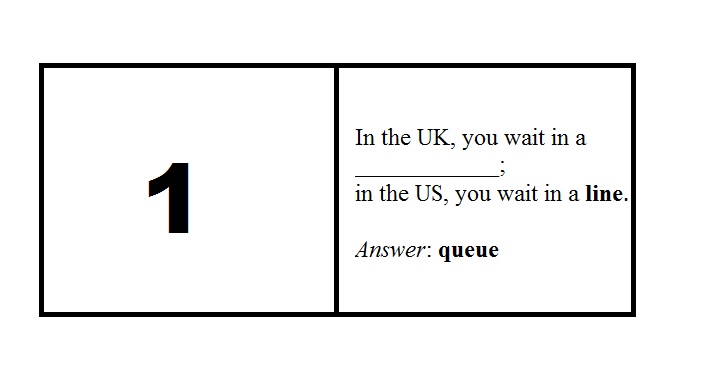
Pair up students and have them draw a ladder on a sheet of paper. The number of rungs of the ladder equals the number of test points (if you use two test versions for Student A and Student B), or its half (if you use one test version per two students).

How to play: The aim of the game is to climb the ladder. The first player picks up a card from the pile and reads it to the other player. If the player gives the right answer, he or she moves one rung up and puts his or her name initial on the rung. Then this player picks up a card and reads the task for the first player. If the player fails to give the right answer, he or she stays on the same rung and puts his or her name initial on the same rung again. The winner is the one who manages to climb the ladder faster.
Ask players to put cards with challenging tasks aside. After the game is over, collect students’ “ladders”, including the cards that caused some difficulties, to study the progress of your students and provide more practice in the relevant areas, or to give some individual assignments to students, if needed.
One more option is to embed a test in a board game.
Option 3: Three – five players
Board games
Before the game: It won’t take much of your time to design a board game if you have a good template – this template Board Game 1.0 designed by Tekhnologic will surely be a time saver. You may either fill in the spaces of the board with particular assignments, or complement the board with a set of cards for Grammar, Vocabulary or Speaking spaces with answers provided (see the Ladder Game).

How to play: Split students into small teams of 3-5 players in each. Each player in turn throws the dice. The player with the highest total starts the play. He or she places the counter on the space marked “START”, then throws the dice and moves the counter the number of spaces indicated by the dice. Depending on the space the counter reaches, the player may draw a Grammar, Vocabulary or Speaking card. The task should be read by another player. If the player gives the right answer, he or she stays on the new space, if not – the player gets back to the initial space. After the player has completed his or her play, the turn passes to the left. Two or more counters may rest on the same space at the same time. The winner is the one who reaches the Finish space first.
If you have several teams and you are not sure whether you will be able to monitor all of them, you might assign a scribe whose task will be to keep track of records, fill in rubrics for speaking challenges and collect cards that caused some difficulties.
With just a snap of fingers, poof, the test is gone.
Good luck and happy teaching!
Thanks Svetlana!
A few extras from tekhnologic
Because we appreciate Svetlana taking the time to write the first guest post for tekhnologic. Here are a few extras that we thought we would throw in.
The Betting Game
Visit the tips & tricks page for help with text form controls. They can be useful when designing your own gap fill exercises.

The Ladder Game
When I read Svetlana’s post, I liked the Ladder Game so much that I decided to make a template in MS Word.
Click THE LADDER GAME to download the Word document.
The ladder is made just by using tables and different lines styles and widths in the border properties. If you want a longer ladder, copy the ladder onto a second page and edit the numbers. Then, print out the two pages and tape them together.
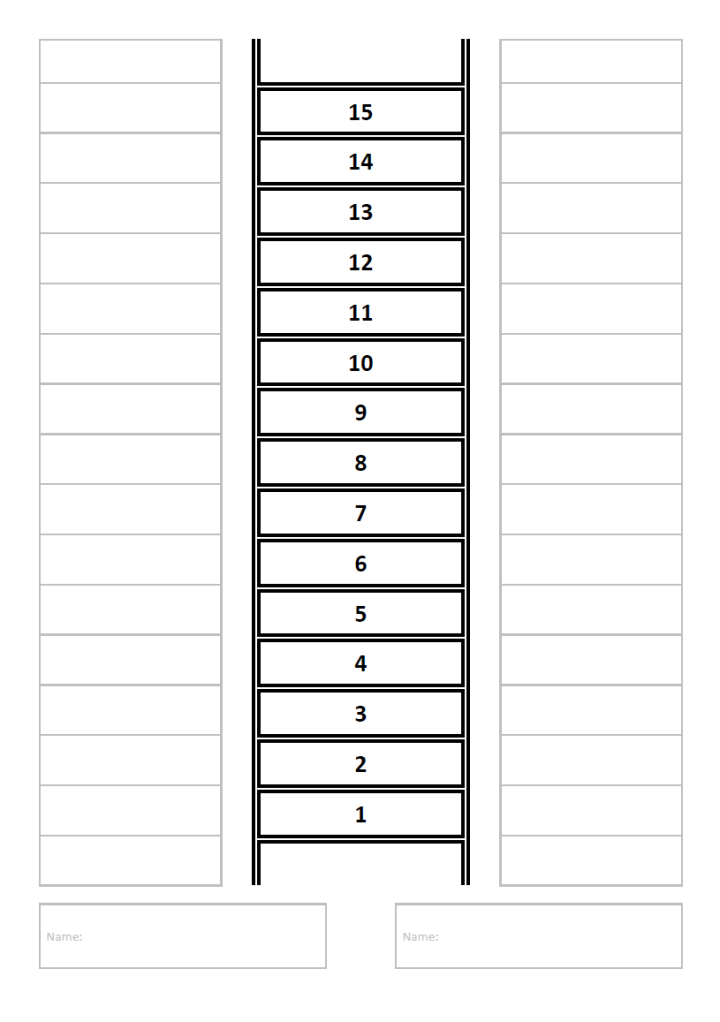
Board Games
Click on Board Game 1.0 to download the PowerPoint template, or visit the downloads page.
When you have downloaded the template, play it as you would a normal board game. Roll the dice and move to the correct square.
Moving your counter is just a click away.
- Click on a corner of the square and your counter will appear.
- Click on the counter again and it will disappear.
- Click on the corner of the square you want to move to.
When you have reach the FINISH square, click on it and the ‘WINNER’ sign will appear.
Press start if you want to reset the game. All counters will disappear.
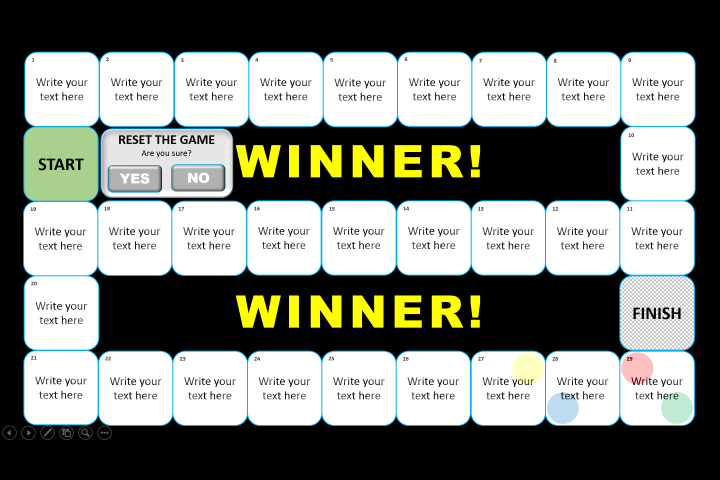
Click on Board Game 1.0 in Excel to download the Excel template, or visit the downloads page.
When you have downloaded the template, just write your questions into the squares and print off a copy.
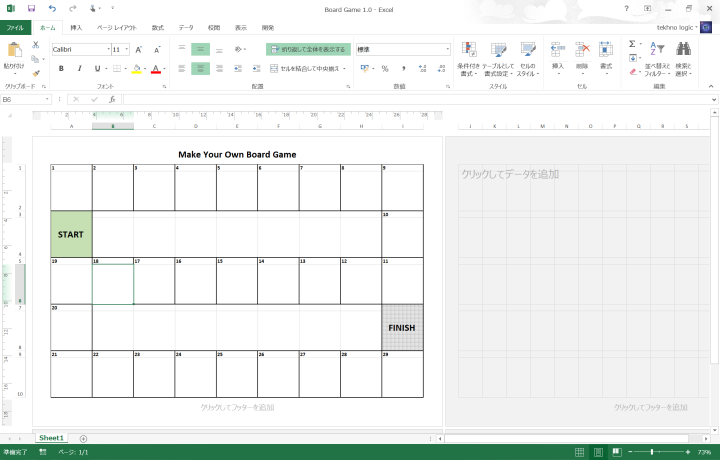


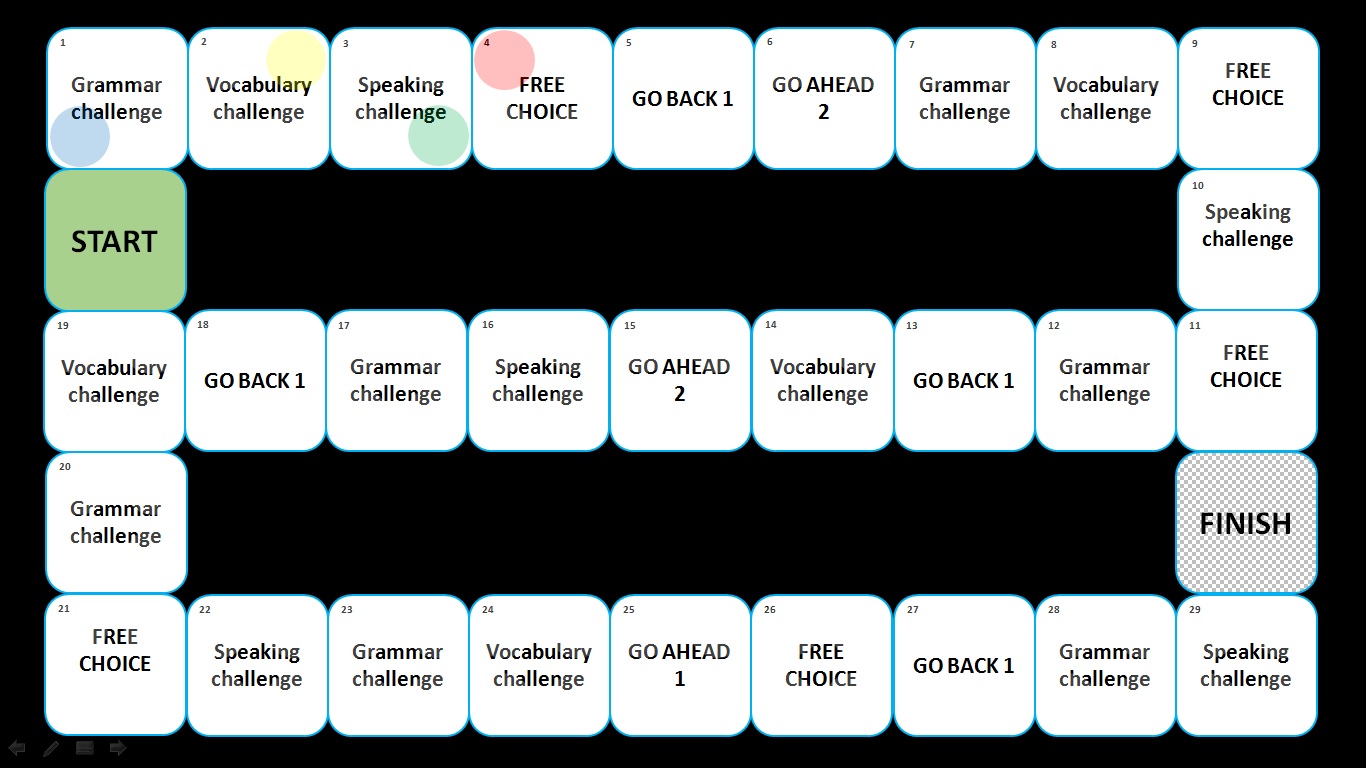

Amazing and interesting!
LikeLiked by 2 people
Reblogged this on ELT-CATION.
LikeLiked by 1 person
Thank you so much for inviting me to write for your fantastic blog and the game templates!
LikeLiked by 1 person
No problem. Thanks for writing a fantastic post! 🙂
LikeLike
so for the ladder game, do you need two questions for each rung? one for each player? maybe 3 or 4 for each rung in case they get it wrong and have to answer that rung again?
LikeLiked by 1 person
Hi Jill. I’ll pass on your question to Svetlana, but I think how you approach it is up to you.
You could have 4 questions for each rung but if you use a 15 rung ladder that is 60 questions cards per set. Even with a small class, you will end up with lots of cards.
There are a few options.
You could make 2 different sets of 15 cards with 2-3 questions on each card. Students could choose one of the questions from the card. This is similar to different colour questions in Trivial Pursuit. If a student gets a question wrong on rung 3, they can try and answer a different question to progress. Less paper is being used, and it would be easier to maintain them as sets. (30 cards per set)
Another option is to have each question card worth one point. Then you could just use two different sets of 15 questions. This way, even if the student gets the first question wrong, they still have further chances to climb the ladder without missing out on a rung. (30 cards per set)
If you want to avoid cards completely, write questions next to the rungs on the handout. Then give the students the answer sheet to their partner’s questions. (3 pieces of paper per set)
Not sure if that helps, so I’ll ask Svetlana and get back to you.
Take care!
LikeLiked by 1 person
These are really good options, T. I’ll try them out:)
LikeLiked by 1 person
No problem. 🙂 I had to go back and change the numbers though to match the number of rungs. Enjoy the weekend!
LikeLike
Hi Jill,
…and here is Svetlana’s answer to your question.
“I made the ladder game up to see how many mistakes per test are made. E.g. 10 points of the test – 10 rungs – the name on the rung twice – one mistake. The numbers of the rung correspond to the test points, i.e. we can see which points were wrong. Rung 4 with the name twice would mean that the kid couldn’t answer point 5 in the test, which would mean that the number of rungs (questions) remaining for him was 9 out of 10. So, basically, a pair does test A and test B – test A for kid 1, and test B for kid 2, with no need in designing some extra questions – some rungs may remain ‘unclimbed’😊 (P.S. In case one finishes faster, I still ask the other player to finish up the game – “Never give up and finish the race”😊 However, if we play it just as a game, I guess we could make some extra questions for both partners in case they fail to climb this or that rung. It’s open to experimenting.”
LikeLike
i love these ideas, btw. thanks so much for posting them.
LikeLiked by 2 people
Hi Svetlana and Pete,
Just to let you know that we’ve shortlisted this blog post for this month’s TeachingEnglish blog award and I’ll be putting up a post about it on tomorrow’s TeachingEnglish Facebook page http://www.facebook.com/TeachingEnglish.BritishCouncil, if you’d like to check there for likes and comments.
Best,
Ann
LikeLiked by 2 people
Thank you Ann 🙂
LikeLike
this idea is very good . i except that may develop for worldwide.thank
LikeLike
Truly doable activities, especially the ladder game. Will definitely try it and come back with feedback.
LikeLike